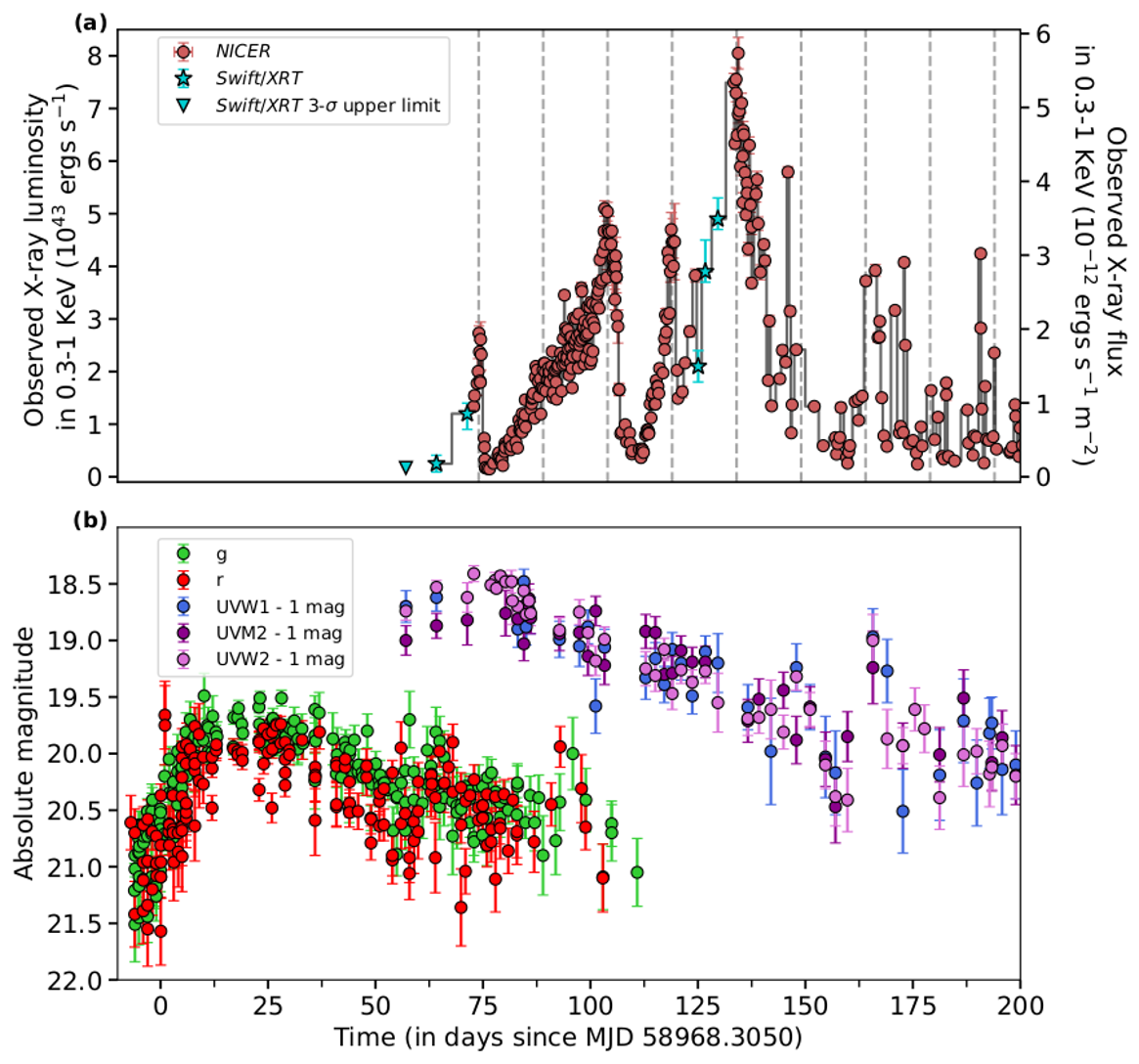NICER / ISS Science Nugget
for May 23, 2024
Relativistic precession of a newly-formed accretion disk
When a star wanders too close to a supermassive black hole, tidal forces can tear it apart. The resulting stellar debris forms a hot accretion disk around the black hole, emitting primarily in soft X-rays (temperatures of around a million Kelvin). Because the star can approach from any direction, the new accretion disk is expected to be misaligned, initially, with respect to the black hole's spin. In the framework of Einstein's Theory of General Relativity, our best current understanding of gravity, such a misalignment will induce a relativistic torque that works to bring the disk of orbiting material into alignment with the black hole's spin "equator". Consequently, for a finite amount of time, this torque will cause the disk to precess (i.e., to wobble), at a rate that depends strongly on the black hole's spin and mass, and on the size of the disk. The predicted disk wobble, known as Lense-Thirring precession, should manifest as strong modulations in X-ray brightness when seen from a distance. Such a signal has not previously been observed, presumably due to lack of suitable, sensitive data soon after a stellar tidal-disruption event.
Using high-cadence monitoring observations with NICER, D. Pasham (MIT) and collaborators describe - in a peer-reviewed paper published this week in the prestigious journal Nature - the discovery of X-ray modulations following a tidal disruption event. Peaks in X-ray brightness recur roughly every 15 days, lasting for about 120 days. Similar modulations were not present in the visible or ultraviolet bands, suggesting that the X-ray signal arises from regions of the accretion disk closest to the black hole. On the assumption that these modulations are indeed the result of Lense-Thirring precession, the research team estimates that the black hole responsible for disrupting the star, in a galaxy about a billion light years away, is dragging the spacetime around it at less than 25% the speed of light.
In the coming years, hundreds of such tidal disruption events are expected to be discovered every year with next-generation ground-based sky-scanning observatories. Even if a small fraction of them can be followed up with X-ray telescopes like NICER, astronomers will be able to address long-standing questions about the distribution of supermassive black hole spins, which is strongly coupled with how these behemoths were formed and have evolved over the age of the universe.

(a) The X-ray brightness evolution of the stellar tidal-disruption event AT2020ocn, as measured with NICER and the X-ray Telescope (XRT) on NASA's Neil Gehrels Swift observatory, reveals modulations that repeat roughly every 15 days, and terminate after approximately 120 days. (b) Visible and ultraviolet-light trends (in red 'r', green 'g', and three UV bands) do not show similar modulations, just the rapid rise and slow decay typical of many observed stellar tidal-disruption events. (Figure credit: Pasham et al. 2024)
<< Previous
Main Index
Next >>